
Discover the average gravel driveway cost, including price ranges, installation factors, and tips to help you budget for your new gravel driveway.
Make sure your landscaping totally rocks


Landscaping rocks can serve a number of purposes—they form the foundation of paths and driveways, they can be used for barriers and walls, they can serve as part of water features and fire pits, and they offer great ground cover. Below, we’ll walk you through 10 of the best landscaping rocks.
Gravel is one of the most versatile and affordable types of landscaping rocks. Gravel prices run from $20 to $100 per cubic yard, or about $10 to $50 per ton. There are several types of gravel to choose from, each serving a different purpose.
That said, people generally use gravel for driveways and walkways, but you can also use it in garden beds, water features, and patios. It’s a versatile type of landscaping rock—permeable and easy to DIY install, though not super attractive.
| Pros | Cons |
|---|---|
| Affordable | Not aesthetically pleasing |
| Easy to install | Not super comfortable to walk on |
| Great for drainage | Requires routine maintenance |
Best for: Budget-friendly driveways and walkways, and as filler in between stone pavers
You can find a wide variety of pebbles, from beach pebbles to polished pebbles, that serve unique purposes in landscaping. They are especially attractive in tranquil garden spaces and at the bottom of water features, such as ponds.
Pebbles are also a great weed deterrent, and they offer great drainage and erosion control in yards and gardens. Pebbles cost more than gravel, and like gravel, they require more maintenance and aren’t great to walk on.
| Pros | Cons |
|---|---|
| Aesthetically pleasing in water features and gardens | More costly than gravel |
| Easy to install | Not super comfortable to walk on |
| Great for drainage and erosion control | Requires routine maintenance |
Best for: Zen gardens and water features
Decomposed granite is a great solution for building a walkway or driveway on a budget. It also makes ground cover and mulch, is permeable, and, perhaps most importantly, is highly affordable. In fact, decomposed granite costs as little as $40 per cubic yard.
Decomposed granite is low maintenance and helps deter weeds, and it’s an easy DIY installation project. However, the granite can create a lot of dust, which can be an irritant on windy days. It’s more prone to erosion than pebbles and gravel, and it’s too loose for slopes. It also breaks down faster than some other materials, meaning you need to replace it more often.
| Pros | Cons |
|---|---|
| Highly affordable | Creates a lot of dust |
| Easy to install | Not good for erosion control |
| Great for drainage and deterring weeds | Requires more regular replenishing |
Best for: Affordable driveways, walkways, and ground cover
Crushed stone is a great mulch alternative, as it provides great drainage for plants and shrubs in your garden. Sourced from stone quarries, each individual crushed stone is about the size of (a very jagged) marble.
Crushed stone is an ideal landscaping material for patios and can serve as an underlayment. It can also be used in yards with active dogs, who may tear up grass when playing and kill it when urinating. However, stone can get hot in direct sunlight and retain the heat for a while, so it’s less ideal in warmer climates. It is best paired with drought-tolerant plants. It’s also more expensive than traditional mulch.
| Pros | Cons |
|---|---|
| Durable as a mulch | Not great with sensitive plants |
| Permeable | More costly than other mulch options |
| Versatile—great for patio underlayment and dog play areas | Not comfortable walking on |
Best for: Garden drainage
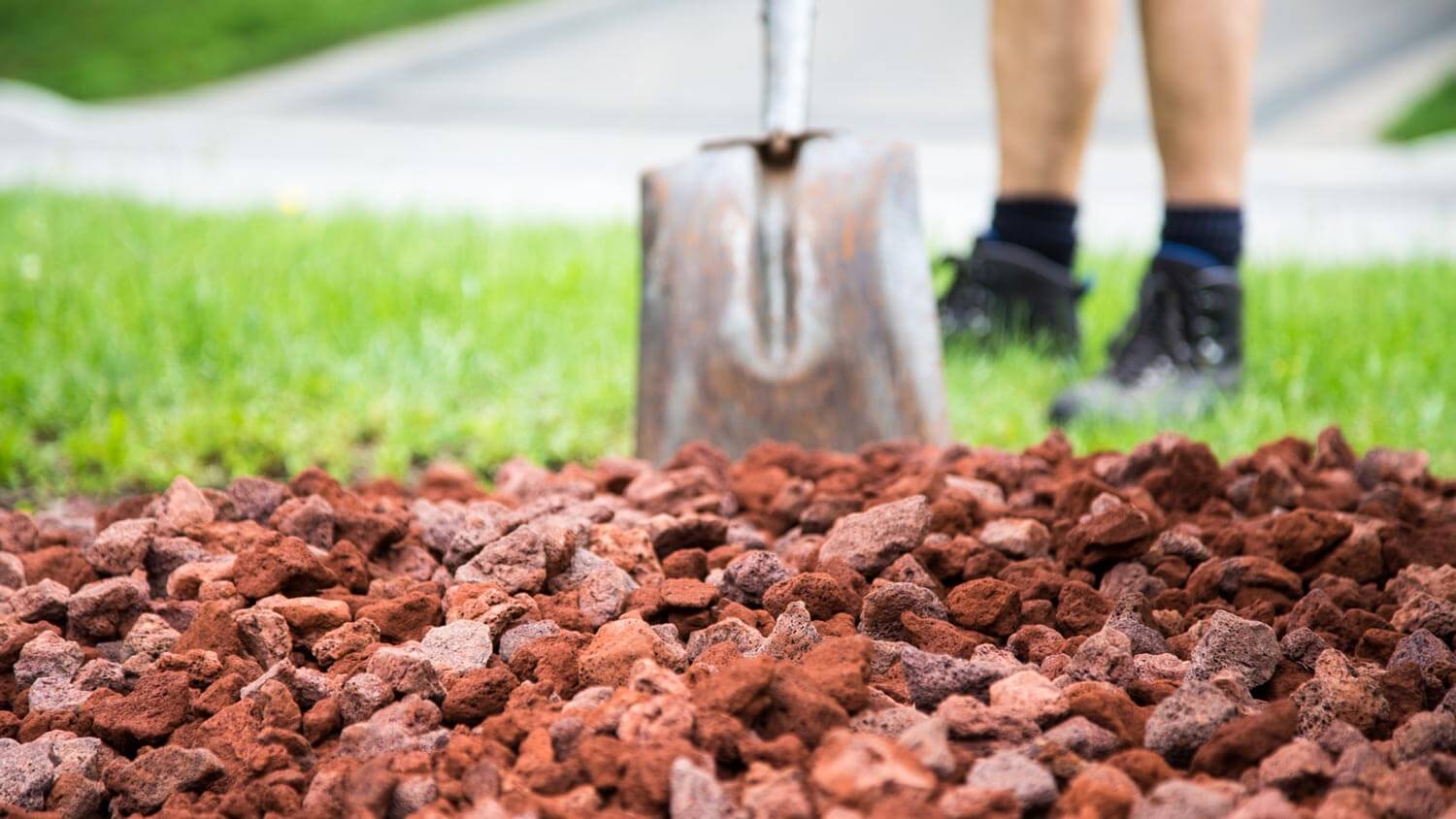
Looking for a cool rock garden idea? Lava rocks offer a nice aesthetic that can make your garden stand out. They are especially attractive in desert landscaping, like a garden of cacti. But lava rocks are about more than just looks: They’re porous, so they are great for drainage; they don’t require a lot of maintenance; and they deter weed growth. They also make a great base for custom fire pits.
That said, lava rocks are among the most expensive types of small rocks for landscaping, at $3 to $8 per square foot. They are also lightweight, so they can be blown away easily in extreme weather (errant lava rocks have been known to destroy lawn mower blades), and they retain heat, making them dangerous to handle or step on barefoot when they're in direct sunlight.
| Pros | Cons |
|---|---|
| Aesthetically pleasing | Easily blow away |
| Great for desert gardens and fire pits | Can get too hot |
| Super low maintenance | Expensive compared to other smaller landscaping rocks |
Best for: Garden accents, desert landscapes, and fire pits

River rocks are exactly what they sound like: rocks sourced from a river. These make them ideal for any water features, like a pond or dry creekbeds on your property. River rocks also make great borders for pebble or gravel walkways. These rocks provide great drainage, they’re durable and long-lasting (think about how long those rocks have sat in rivers!), and they’re quite versatile.
However, sourcing river rocks for projects can be costly. If water flows over them regularly, they tend to shift over time. They are also heavier than smaller rocks, making them more challenging to rearrange. Finally, they tend to sink into the soil over time.
| Pros | Cons |
|---|---|
| Great drainage | Expensive to install |
| Versatile use cases | Can shift or sink over time |
| Natural aesthetic for water features | Heavy and thus challenging to move |
Best for: Water features and walkway borders
Cobblestone offers a timeless look for pathways through your yard and garden, and it also adds charm to your driveway when used as the driveway apron. (If you don’t know your parts of a driveway by heart, that’s the section where the driveway connects to the street.) Cobblestone is also durable, low-maintenance, and eco-friendly.
Unfortunately, it’s also expensive; a full cobblestone driveway costs $16,700 on average. Cobblestones can also shift over time, and the surface is uneven and textured, which can be problematic if you’re riding a bike or walking in high heels. Moss also grows easily on cobblestone, which can make it slippery—even in more walkable shoes than high heels!
| Pros | Cons |
|---|---|
| Timeless aesthetic | Very expensive |
| Highly durable | Can be a tripping hazard |
| Low-maintenance | Difficult to install |
Best for: Walkways and driveway aprons
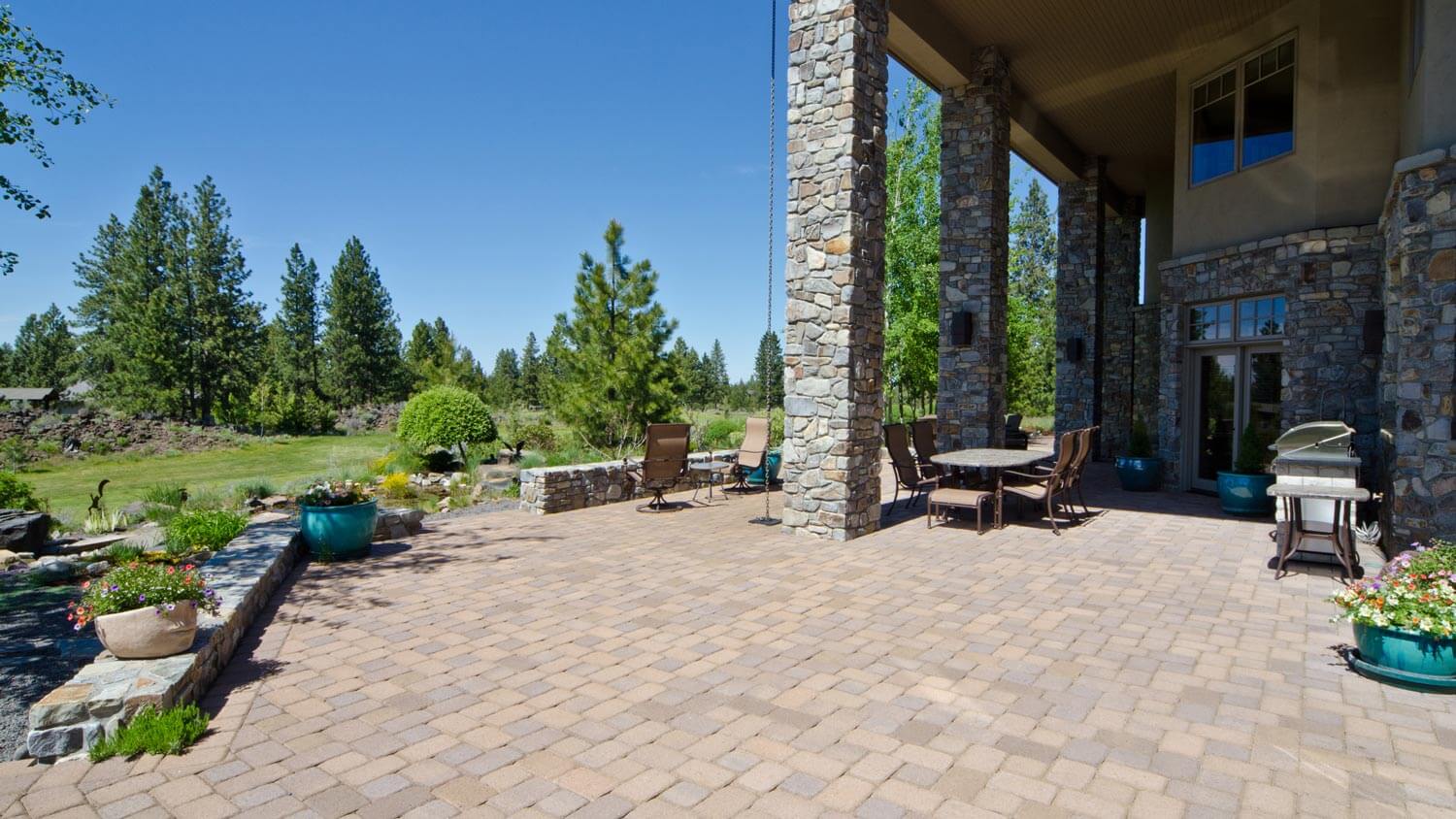
Flagstone is one of the best types of landscaping rocks for patios and walkways. It’s aesthetically pleasing and comes in a wide variety of colors, including blue, red, and beige, which gives you plenty of options to customize your space to your liking. Flagstone is also very durable.
Because of each stone’s unique shape and heavy weight, flagstone can be more labor-intensive (and thus expensive) to install. The material itself is also expensive; flagstone costs $200 to $550 per ton. Flagstone may sometimes result in an uneven surface, and it can be slippery after it rains.
| Pros | Cons |
|---|---|
| High-end, unique aesthetic | Expensive |
| Durable and long-lasting | Difficult to install |
| Comes in multiple colors | Can be uneven and slippery |
Best for: Patios and walkways
If you thought river rock sounded straightforward, let us introduce you to fieldstone. Fieldstone represents a wide range of rock types—simply sourced from a field. Fieldstone is a heavy, durable material that is great for building landscaping walls, including retaining walls. Such walls can be both functional and fashionable, but most importantly, they are a truly safe wall material, whether dry-stacked or with mortar.
That said, building a retaining wall is a tough job. You will definitely want to hire a local retaining wall installer to tackle this project, which can get expensive. The stone itself may also be expensive, especially if the wall is large. Over time, retaining walls do require a fair bit of maintenance, which can also be expensive.
Looking for another use for fieldstone? You can also use this landscaping rock decoratively in gardens or to form a stepping stone pathway.
| Pros | Cons |
|---|---|
| Durable material for walls | Expensive installation |
| Easy to source | High material costs for large wall |
| Can also be used decoratively | Expensive maintenance over time |
Best for: Walls and stepping stones

The biggest landscaping rock of all is the boulder, which you can use decoratively, as a massive accent piece in your yard or garden, or functionally, perhaps to terrace a hillside. You can also use boulders to line walkways, to build walls and barriers, and to construct water features.
Boulders are low-maintenance and high-impact. However, they’re incredibly heavy, so you’ll likely need to hire a local rock delivery specialist to get them to your home and likely to install them. They can also be expensive, ranging from $150 to $350 per boulder. And once they’re installed, they’re difficult to move—so you’ve got to make sure you’re happy with where it’s dropped.
| Pros | Cons |
|---|---|
| Multipurpose, from accents to terracing to walls | Too heavy to DIY install |
| Aesthetically pleasing | Expensive |
| Low maintenance | Difficult to move |
Best for: Accents and terracing
From average costs to expert advice, get all the answers you need to get your job done.

Discover the average gravel driveway cost, including price ranges, installation factors, and tips to help you budget for your new gravel driveway.

Discover the average gravel pad for shed cost, including installation, materials, and tips to save money. Get a detailed breakdown to plan your shed foundation project.
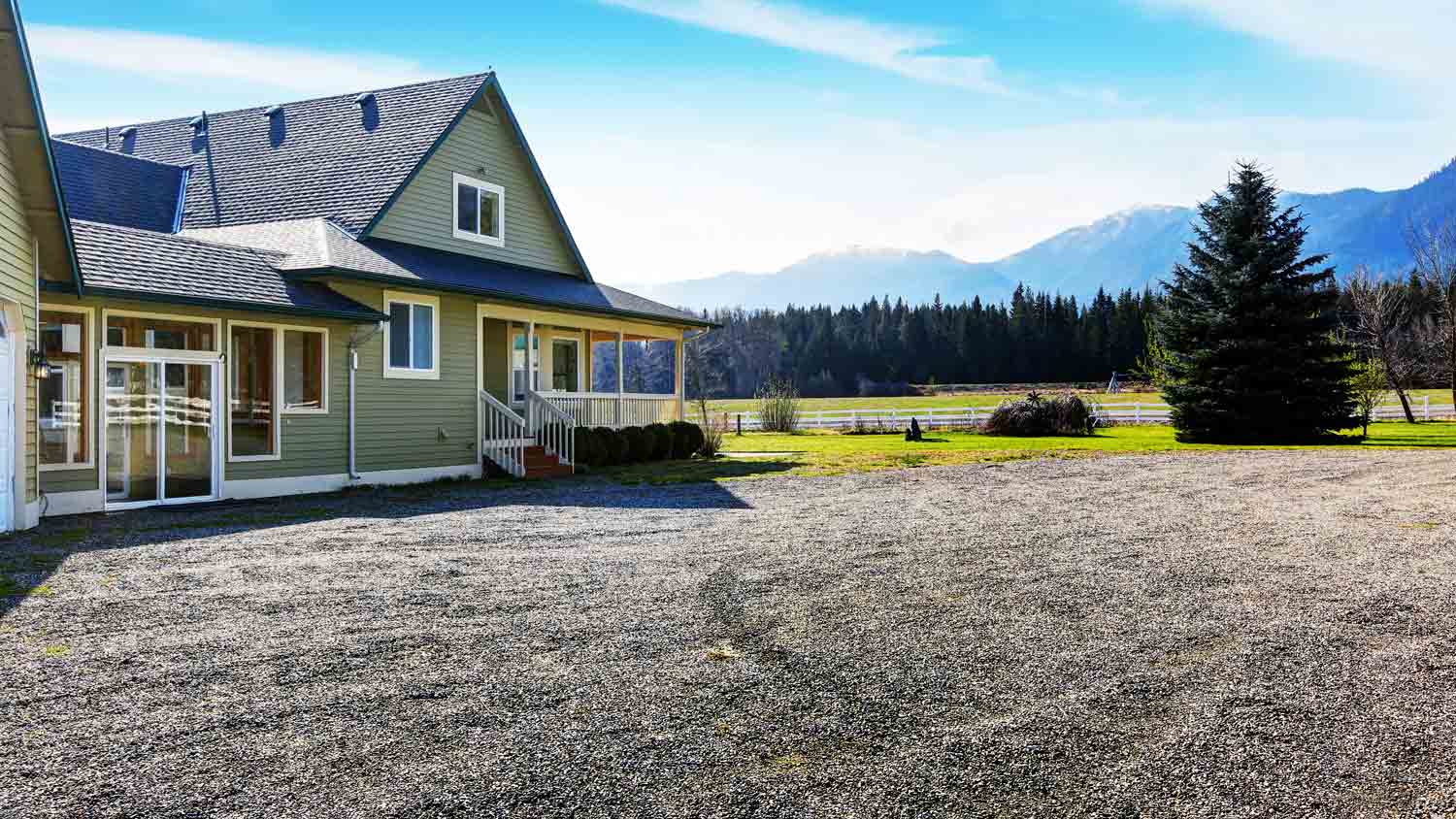
Gravel is loose rock that has been naturally eroded and is a popular choice for landscaping or pathways. Learn more about what gravel is used for in this article.
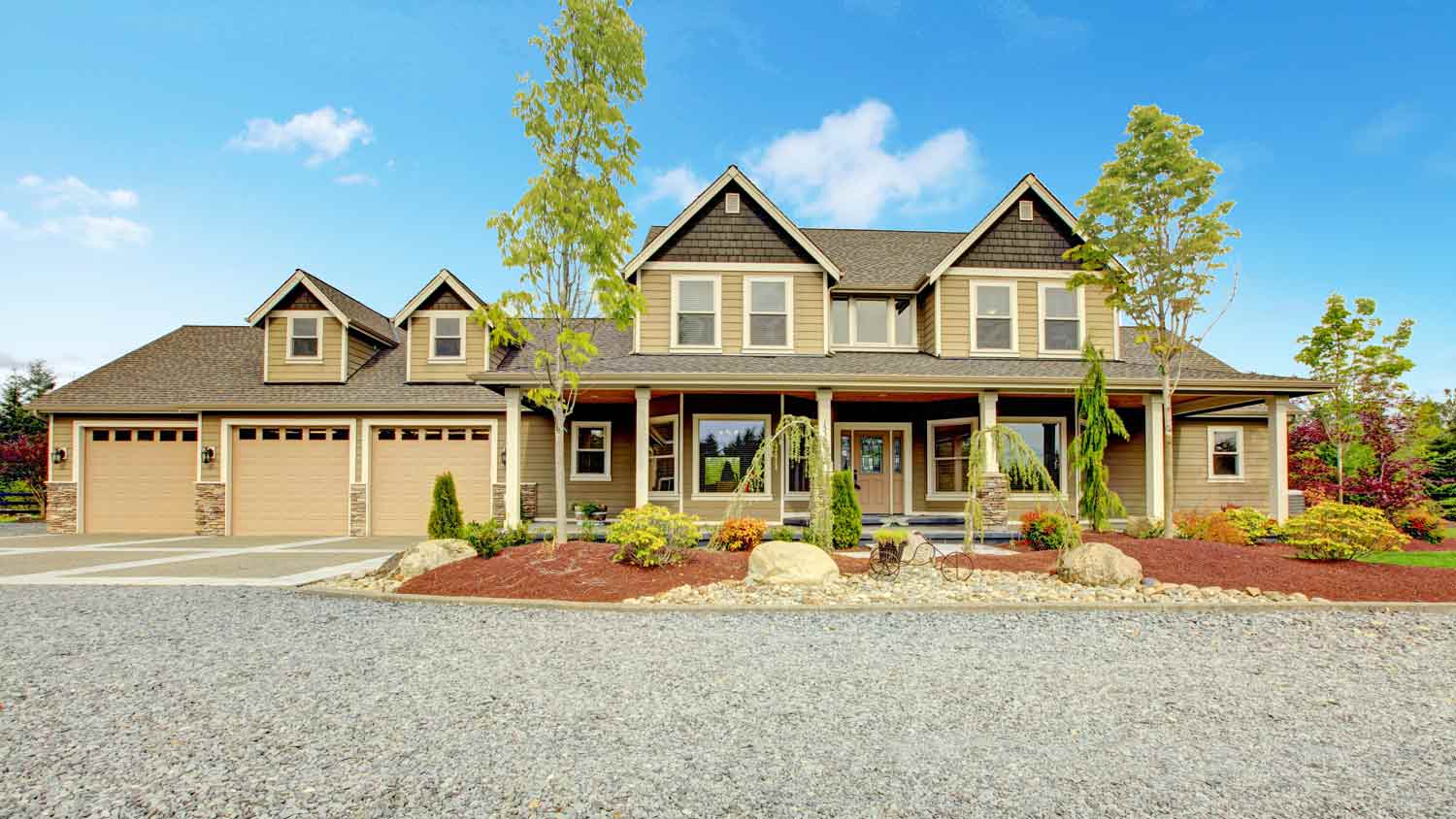
Wondering whether to use large or small gravel? This guide breaks down the key differences based on factors like drainage, stability, and maintenance to help you choose the right size for your project.

The layer of dust on your driveway makes its way onto everything, including your car and windows. Learn how you can get rid of dust on your gravel driveway.
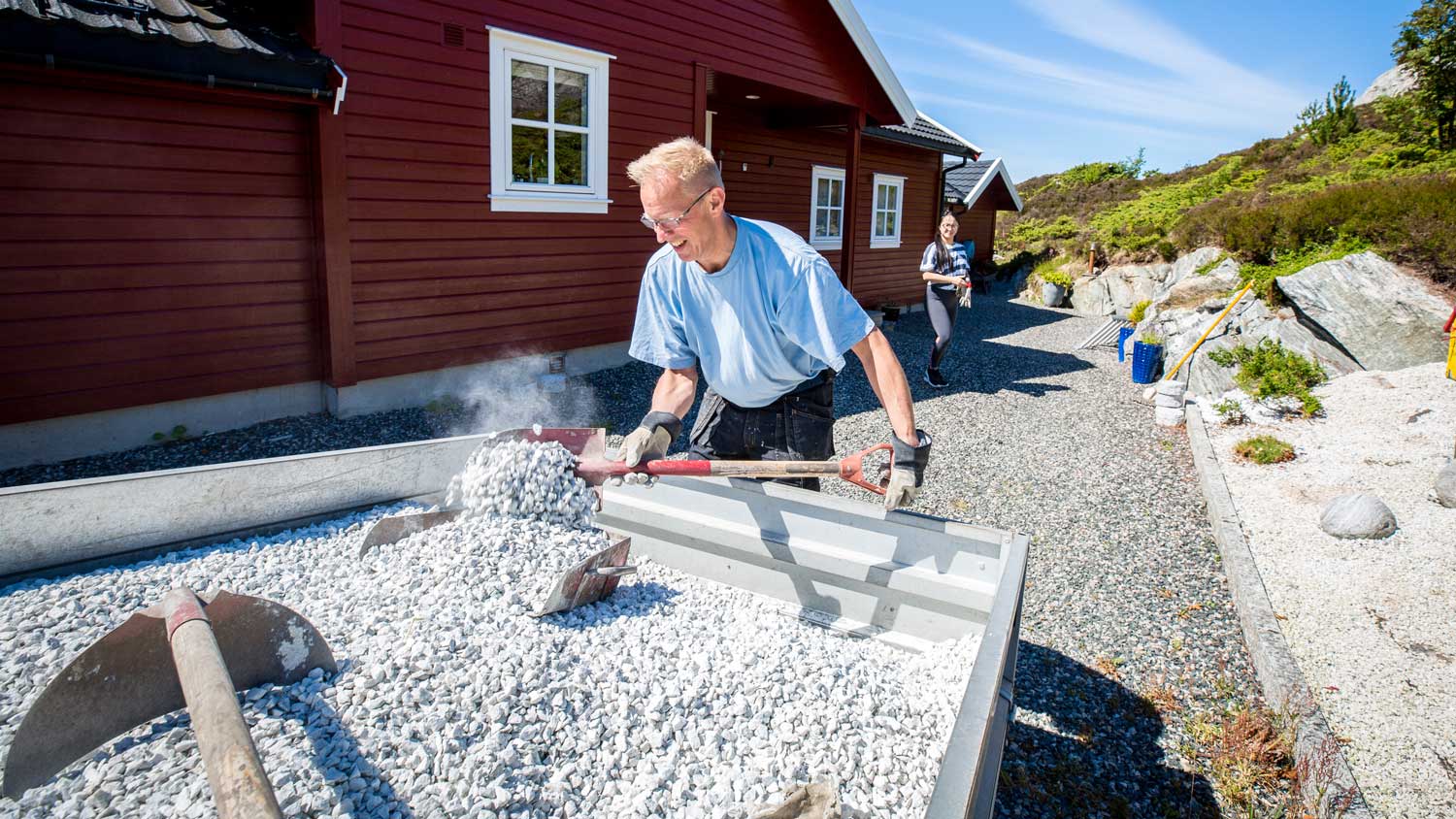
How much gravel do you need? We’ll walk through how to calculate the right amount of gravel with a simple formula.